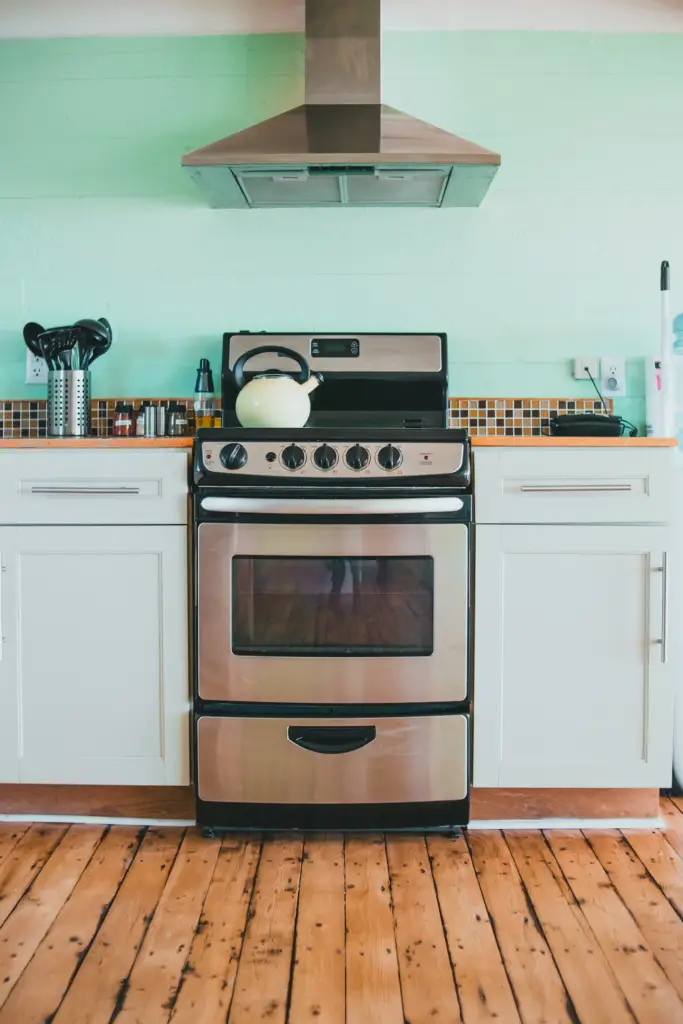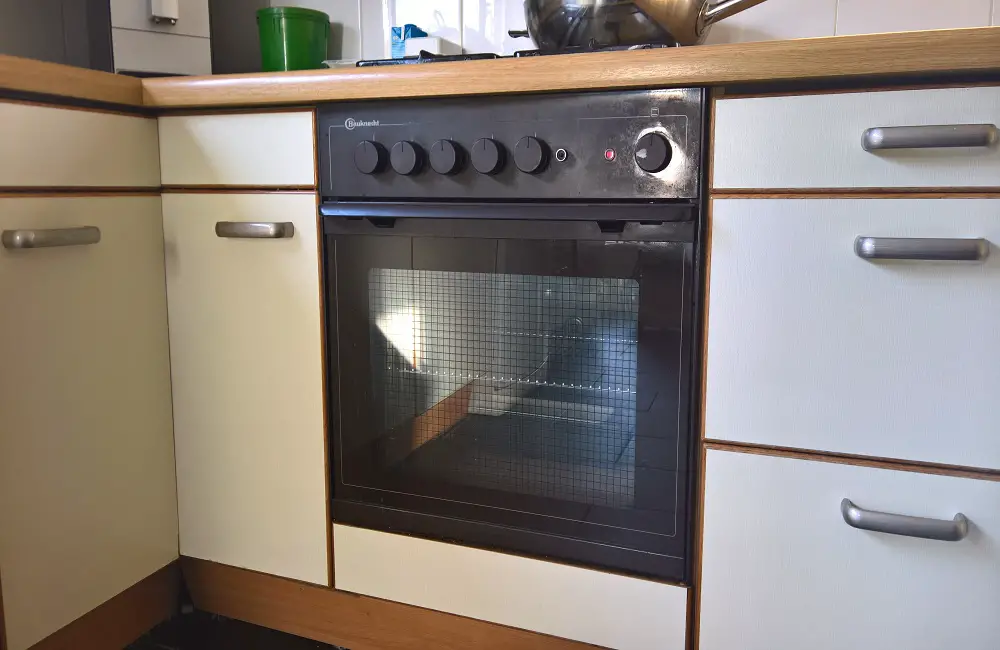Maintaining a clean and sanitary kitchen is critical for both the performance of your appliances and the health of your family members. Among the many kitchen appliances that must be cleaned on a regular basis, many homeowners find cleaning the oven to be particularly difficult.
Grease, food spills, and baked-on residue can accumulate over time, reducing oven performance and posing health risks. However, with the appropriate technique and a few helpful hints, cleaning your oven does not have to be a difficult task.
In this tutorial, we’ll look at practical methods and strategies for cleaning ovens, so you can keep your kitchen clean and attractive for cooking and baking. Whether you’re dealing with minor surface grime or stubborn, baked-on stains, learning the art of oven cleaning will have your equipment shining and ready for your culinary adventures.
What You’ll Need:
- Rubber gloves
- Easy Off Pro Fume-free Max Oven Cleaner
- Scotch-Brite Heavy Duty Scrubbing Sponges
- Simple Green All-Purpose Cleaner and Degreaser.
- Brillo Heavy Duty Premium Scour Pads.
Step-by-Step Instructions for Cleaning Your Oven

1. Remove the wire racks
Before cleaning the interior of your oven, remove the racks, especially if it is self-cleaning. The self-clean cycle works by raising the temperature inside the oven to an extremely high level (some ovens reach 900° F!) in order to burn off any remaining food and fat. While your oven’s racks are designed to endure high cooking temperatures, these temperatures are too much for the racks, causing irreversible damage.
2. Remove any loose food bits from inside your oven
After removing the wire racks, use a moist rag or sponge to wipe any stray food and grease from the oven.
3. Run the self-cleaning cycle or apply the oven cleaner if your oven doesn’t have a self-clean cycle
If you’re utilizing an oven’s self-cleaning cycle, you can skip this step. To reduce odors and smoke build-up, keep several nearby windows open and your kitchen exhaust fan running during the cycle, if you have one. If you can’t recall the last time you ran a self-clean cycle, the aromas generated will most likely be unpleasant, but you shouldn’t leave your house until the cycle is complete.
For ovens without a self-cleaning cycle, follow the guidelines on the label of your preferred oven cleaner. Many of them should sit for a while to remove stuck-on dirt and grease. Never spray oven cleaner on your oven while it is in the self-cleaning cycle.
4. Wash wire racks in the sink
While the oven is self-cleaning or the oven cleaner is performing its magic, clean the racks in the sink with warm, soapy water. Use a cleaning sponge or scouring pad to remove tenacious muck and grime off the racks. Then, rinse and air dry them until you’re ready to put them back in the oven. If the racks are very unclean, soak them overnight in a cleaning like Carbona 2-in-1 Oven Rack and Grill cleaning.
5. Clean up debris or oven cleaner inside the oven
After the self-cleaning procedure has completed and the oven has totally cooled, use a moist sponge or rag to wipe the ashy food bits from the oven’s bottom. If you used an oven cleaner, now is the time to remove it with a wet sponge and rinse the interior with water.
6. Replace the wire racks and clean the glass window
Finally, return the racks to the oven and clean the glass window, inside and out, with a degreasing multipurpose cleaner or glass cleaner and a microfiber cloth to ensure a streak-free finish. Use a non-scratch scrub sponge to remove any stuck-on grease splatters.
Can I clean my oven with baking soda?

Many others suggest using a baking soda paste to clean the interior of your oven, but we don’t. It’s filthy and takes extra scrubbing and rinsing, and who wants to spend two days cleaning their oven? Baking soda is moderately abrasive and works well as a spot cleaner in the oven, but we do not recommend using it to clean the entire oven. Other DIY cleaners, such as baking soda mixed with vinegar or lemons in an oven-safe tub of water, work similarly.
While these may be effective cleansers, and we understand the reluctance to use oven cleaners due to fumes and strong odors, it is simply far easier to utilize an oven’s self-cleaning feature or a cleaner designed specifically to clear the burnt-on items left behind in ovens. And modern oven cleansers differ greatly from previous models. Many products are designed to emit fewer or no emissions.
How to keep an oven tidy between deep cleanings
Just because you know how to clean your oven successfully doesn’t mean you shouldn’t strive to avoid making a mess. As a general guideline, cover pots with lids or aluminum foil to avoid splatters, and lay baking sheets on the bottom racks when baking pies and casseroles to catch any that may boil over. As soon as you detect a spill, carefully sprinkle table salt on it while it is still warm to absorb it, then wash it up with a moist sponge or towel once the oven has cooled.

